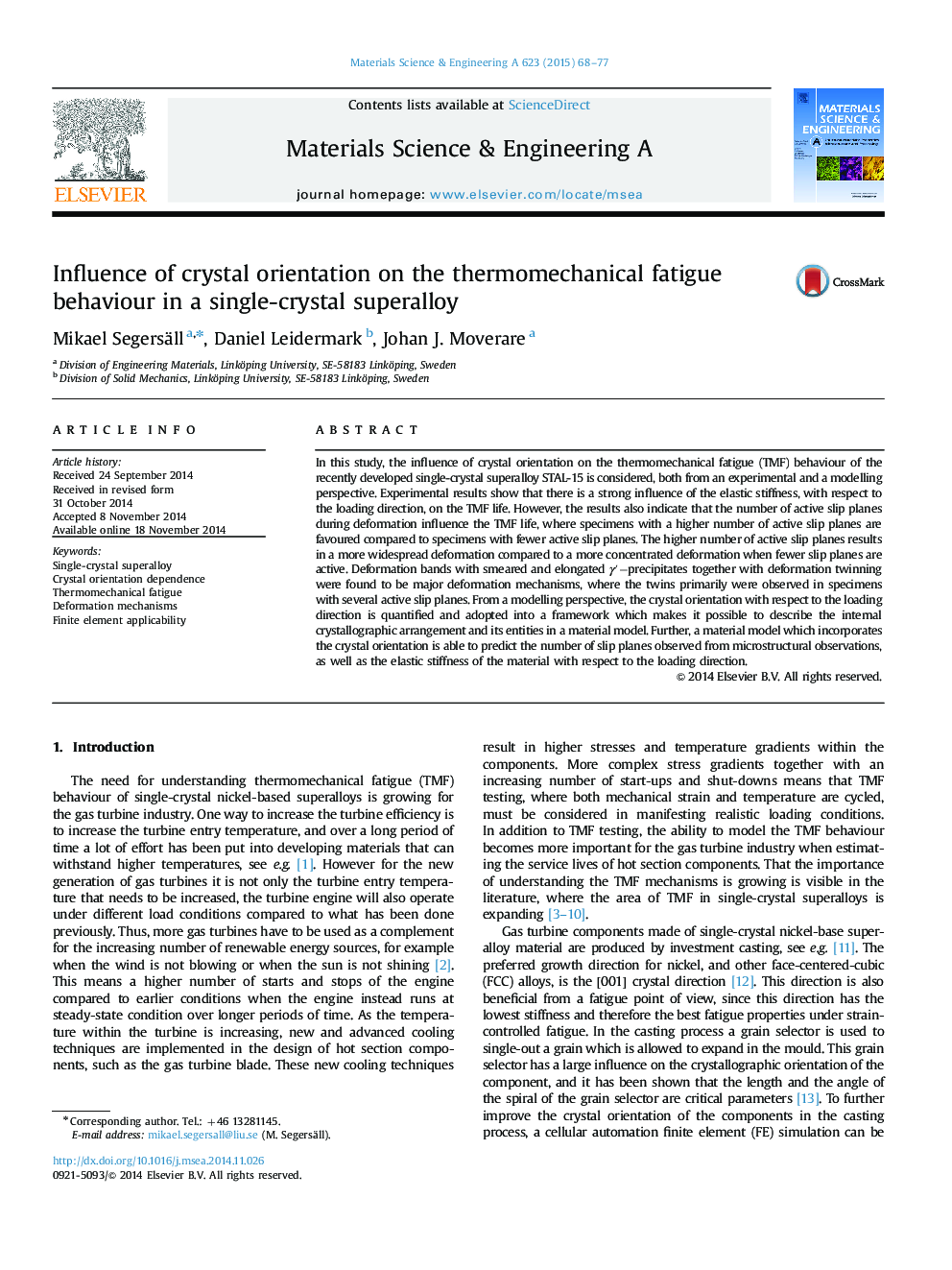| Article ID | Journal | Published Year | Pages | File Type |
|---|---|---|---|---|
| 1574637 | Materials Science and Engineering: A | 2015 | 10 Pages |
In this study, the influence of crystal orientation on the thermomechanical fatigue (TMF) behaviour of the recently developed single-crystal superalloy STAL-15 is considered, both from an experimental and a modelling perspective. Experimental results show that there is a strong influence of the elastic stiffness, with respect to the loading direction, on the TMF life. However, the results also indicate that the number of active slip planes during deformation influence the TMF life, where specimens with a higher number of active slip planes are favoured compared to specimens with fewer active slip planes. The higher number of active slip planes results in a more widespread deformation compared to a more concentrated deformation when fewer slip planes are active. Deformation bands with smeared and elongated γ′-precipitatesγ′-precipitates together with deformation twinning were found to be major deformation mechanisms, where the twins primarily were observed in specimens with several active slip planes. From a modelling perspective, the crystal orientation with respect to the loading direction is quantified and adopted into a framework which makes it possible to describe the internal crystallographic arrangement and its entities in a material model. Further, a material model which incorporates the crystal orientation is able to predict the number of slip planes observed from microstructural observations, as well as the elastic stiffness of the material with respect to the loading direction.
